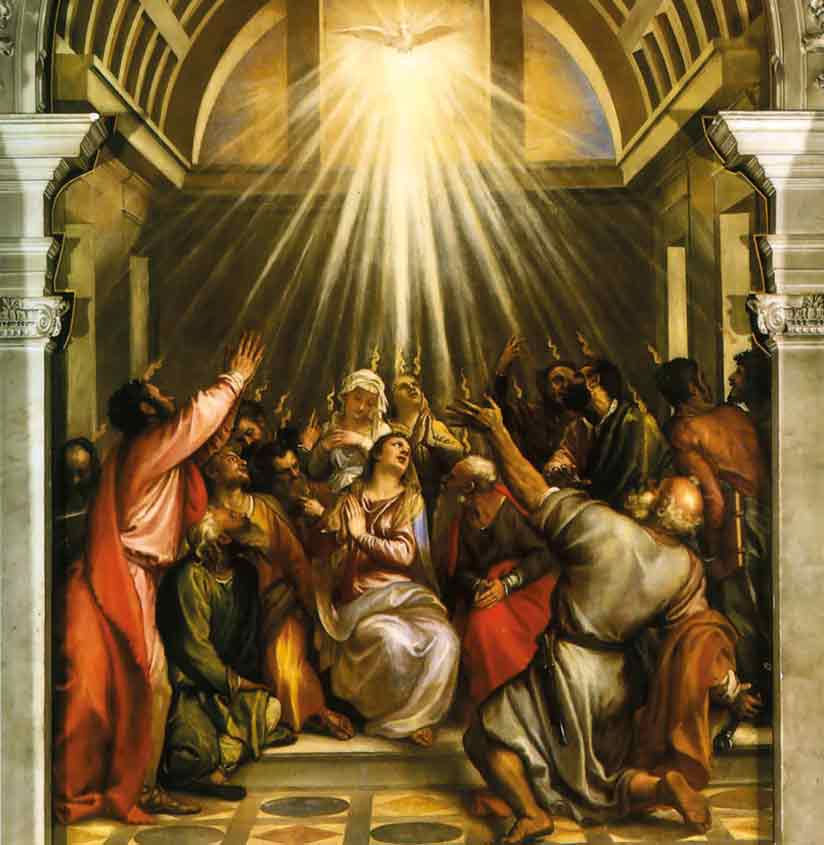On May 20, 1985, John Paul II gave a homily at a Mass with artists in Brussels: "The Church has long since made a covenant with you [...] Do not interrupt this extraordinarily fruitful contact! Do not close your spirit to the breath of the divine Spirit!". This dialogue between art and the Church was undoubtedly an important concern of John Paul II. In Brussels, he addressed the problem of the artistic representation of God.
The representation of the divine mystery is a basic problem of Christian art. It also concerns how to represent the Holy Spirit. Artists have to decide in which symbolic language the reality behind the visible things can be most adequately expressed. Nor is the representation of the Holy Spirit obvious in the history of art.
The first iconographic representations of Pentecost arose in the 5th century as a consequence of the dogmatic decisions of the Councils of Nicea (325) and Constantinople (381). In any case, the most important formula for the Holy Spirit in the imagery of late antiquity was the dove (Mt 3:16), in accordance with the great importance of the biblical witness in the faith of the early Church. Also in contemporary art, the most frequent image of the Holy Spirit is the dove.
In the third and fourth centuries, ecclesiastical writers had allegorically referred the dove to Christ or to the human soul, and it had the same meaning in the reliefs and paintings of the sepulchral art of that time. But since the biblical truth of the triune God was elevated to dogma of the Church, (381), in the images the dove was reserved for the Person of the Holy Spirit. In the images, the rays that surround it or depart from it indicate its condition of divine gift.







